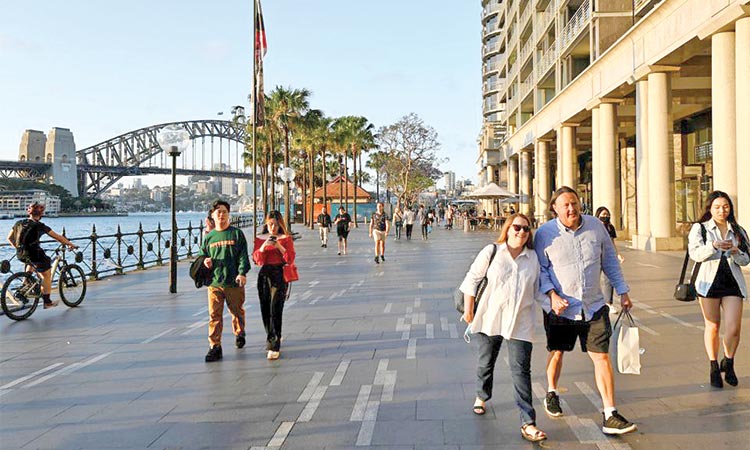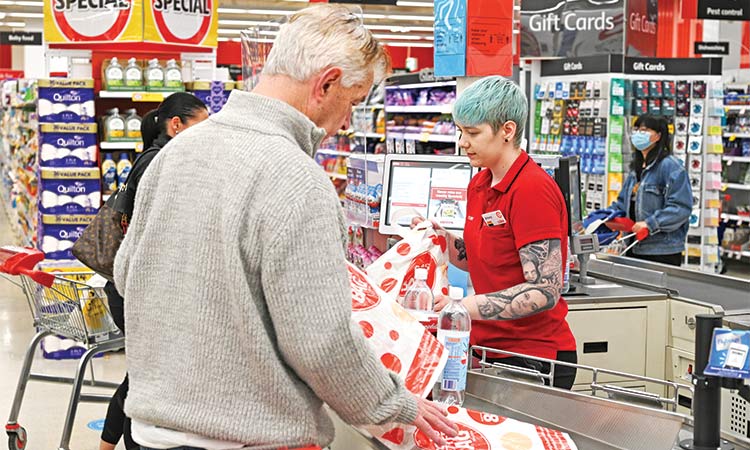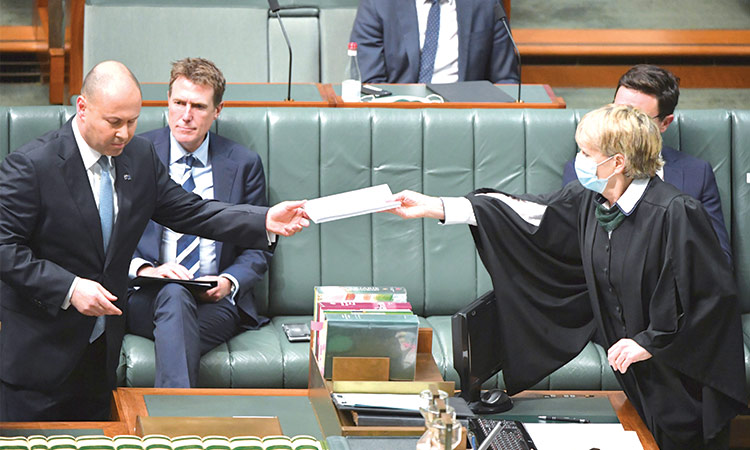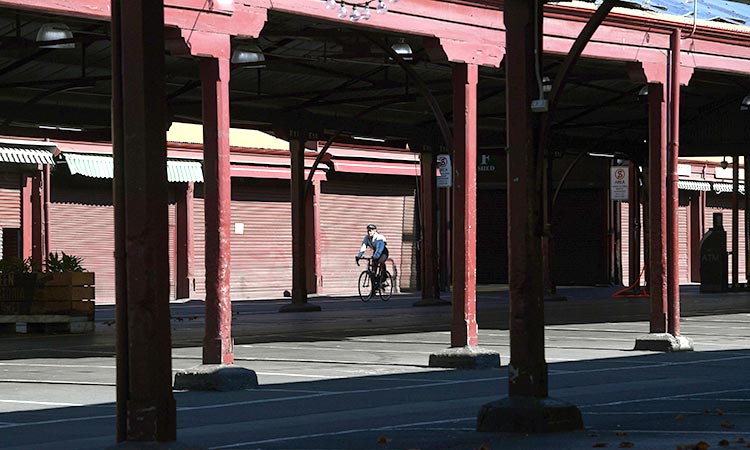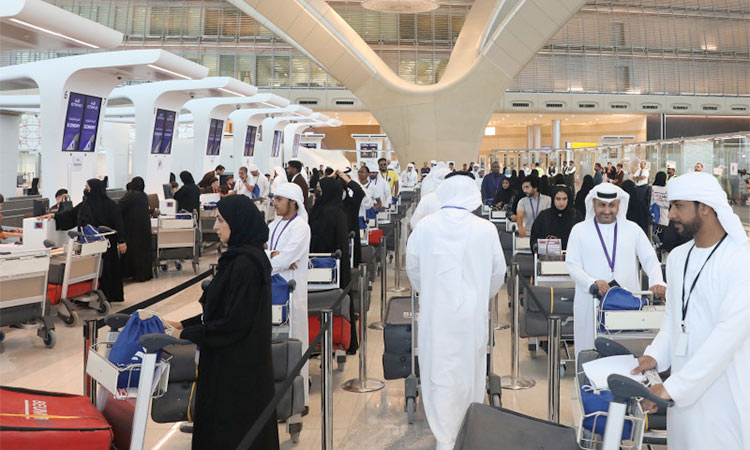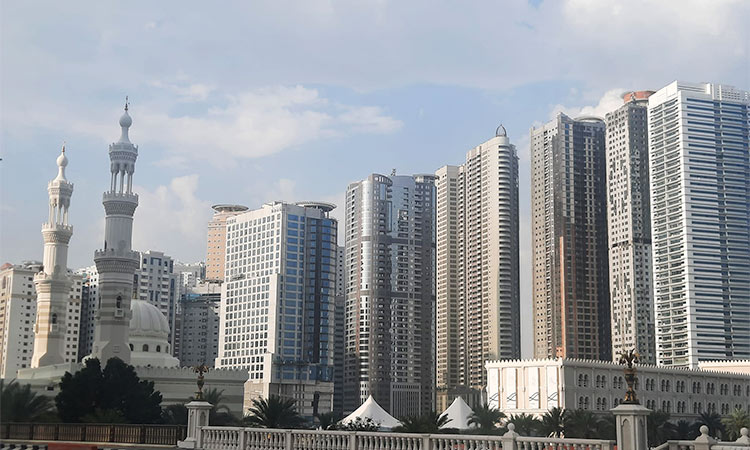Australia’s minimum wage rises by 3% as growth, inflation cool
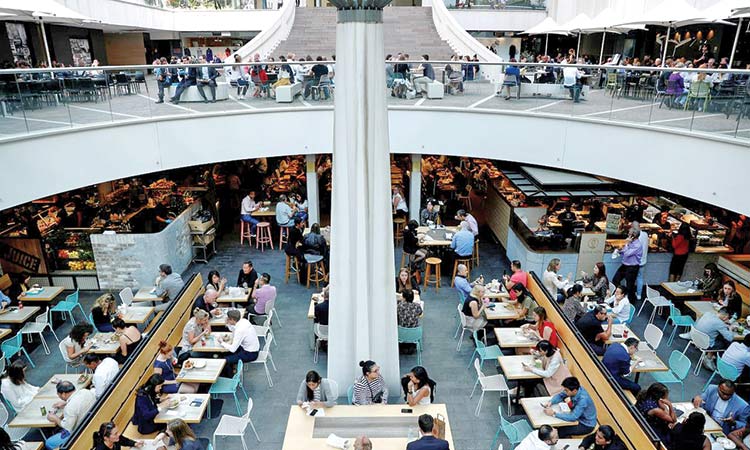
Office workers take their lunch at a food court in Sydney, Australia. Reuters
The pay hike, which is above the industry rate of 2.3 per cent, will, however, be welcomed by the Reserve Bank of Australia (RBA), which believes annual wage increases of 3 per cent and higher are needed to achieve average inflation of 2.5 per cent, the mid-point of its target band.
The new national minimum wage will now be A$740.80 ($512.86) per week, a weekly increase of A$21.60 while the hourly rate will climb to A$19.49, said Justice Iain Ross, president of the Fair Work Commission (FWC).
The annual review is conducted by a panel of experts who set the minimum pay every financial year. The proportion of all employees that are paid at the adult minimum wage rate is estimated to be 1.7 per cent, or around 180,200.
The FWC has also decided to increase all modern “award” wages, the minimum pay rates set for specific industries, by 3 per cent. Award employment contracts cover about 2.2 million employees, or 21 per cent, of Australia’s workforce.
“We have decided to award a lower increase this year than that awarded last year having regard to the changes in the economic environment,” he said.
Australia’s A$1.9 trillion economy slowed sharply in the second half of last year and early indicators suggest the weaker momentum extended into 2019. The unemployment rate is at an eight-month high of 5.2 per cent while headline inflation is notably weak at 1.3 per cent.
“We are satisfied that the level of increase we have decided upon will not lead to any adverse inflationary outcome nor will it have any measurable negative impact on employment,” Ross added.
Economists say the pay boost will have a limited effect on the industry-wide wage growth though it will provide some support to household income and spending.
“We still expect the RBA to cut rates twice this year led by the weaker trajectory for the economy and an expectation for a further moderation in the labour market,” said RBC economist Su-lin Ong.
An overwhelming majority of economists forecast the RBA to lower its cash rate to an all-time low of 1.25 per cent at its monthly policy meeting next week.
Union groups welcomed Thursday’s announcement calling the 3 per cent increase a “step in the right direction” but said more is needed to help alleviate some workers out of poverty. “We have a long way to go to ensure that the minimum wage is enough for workers to live on and support their families,” Australian Council of Trade Unions Assistant Secretary Liam O’Brien said.
“No one in Australia should be living in poverty while working full time.”
Australia’s central bank will consider cutting interest rates next month, Governor Philip Lowe said on Tuesday as the resource-rich economy looked set to join some of its global counterparts in easing financial conditions to boost growth.
Lowe also urged the country’s newly re-elected government to do its part by slashing income taxes and boosting spending, as inflation and wages growth lagged the central bank’s expectations.
“A lower cash rate would support employment growth and bring forward the time when inflation is consistent with the target,” Governor Lowe said in a speech in Brisbane. “Given this assessment, at our meeting in two weeks’ time, we will consider the case for lower interest rates.” A cut would be the first in almost three years for the Reserve Bank of Australia (RBA), which last eased policy to a record low 1.5 per cent in August 2016.
As global demand has cooled over the past year, and a protracted Sino-US trade war took a toll on businesses worldwide, central banks around the world have kept policy stimulatory. The US Federal Reserve halted its monetary tightenings in February, while countries from New Zealand to India and Malaysia have cut rates to support their economies.
“The RBA governor was upfront about the decision facing the Board in June,” ANZ economist David Plank said. “This is as clear a signal as the RBA ever delivers. We think the RBA will cut in June.”
A bevy of economists including those from Westpac and Commonwealth Bank rushed to revise their rate calls to a cut in June. Most expect that to be followed by another easing later in the year. Financial markets are pricing in a 91 per cent chance of an easing next month, from about 50 per cent before Lowe’s speech, and are fully priced for another rate cut in November.
Reuters
